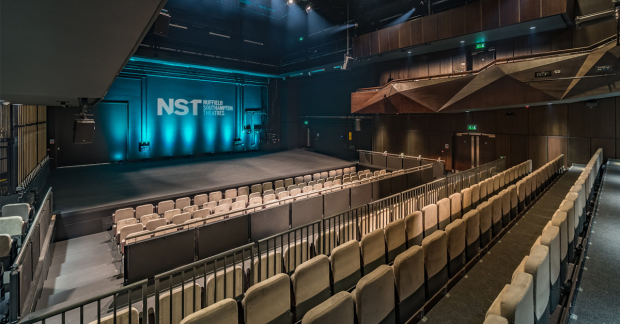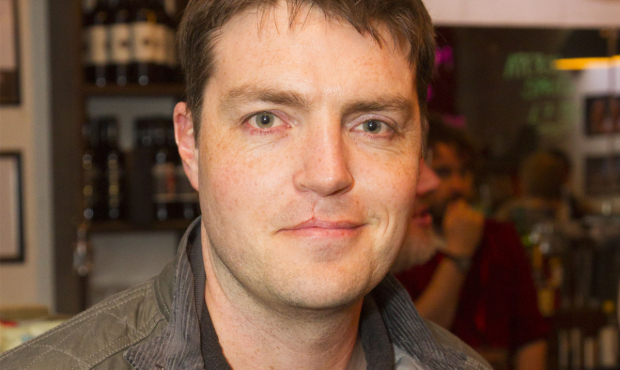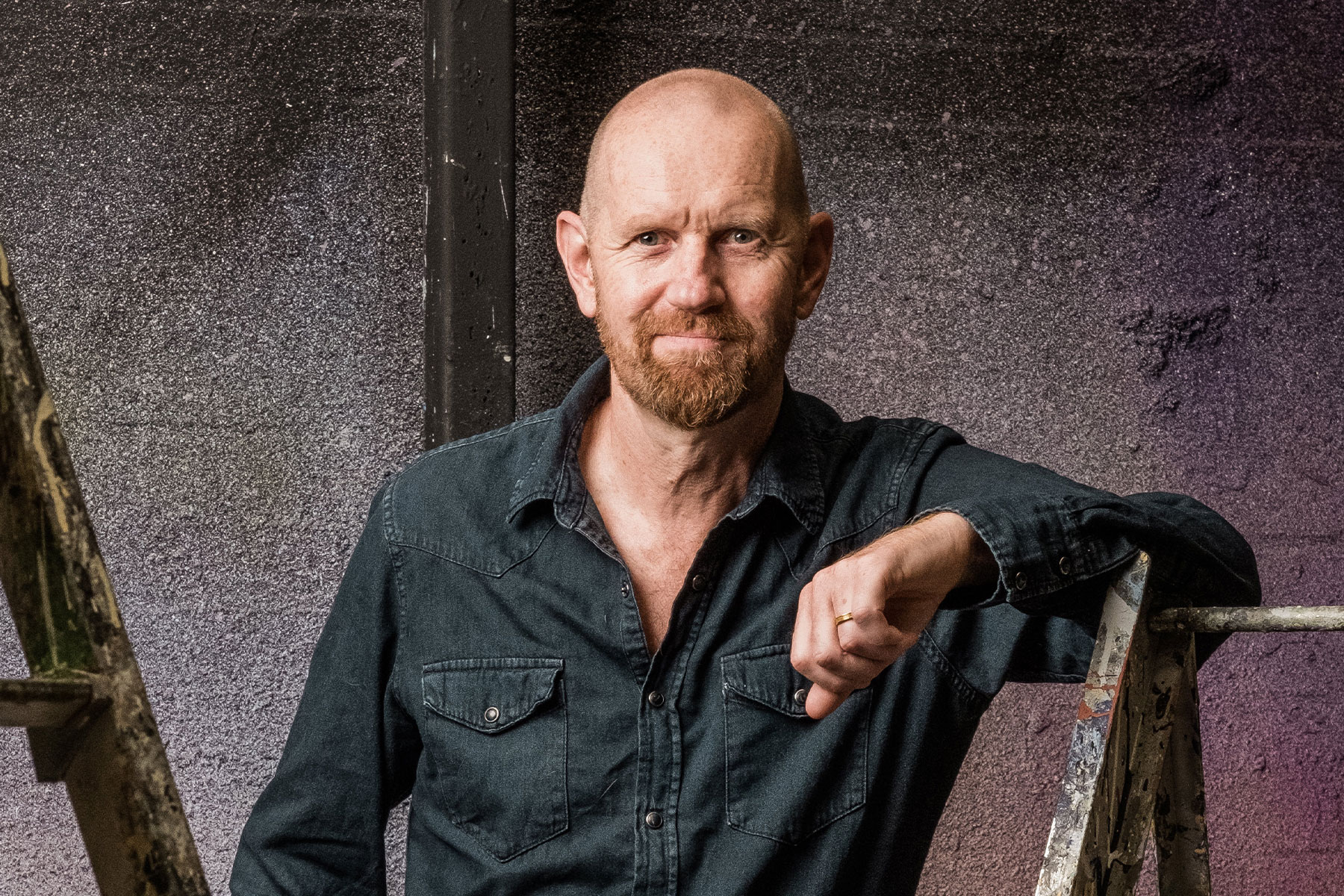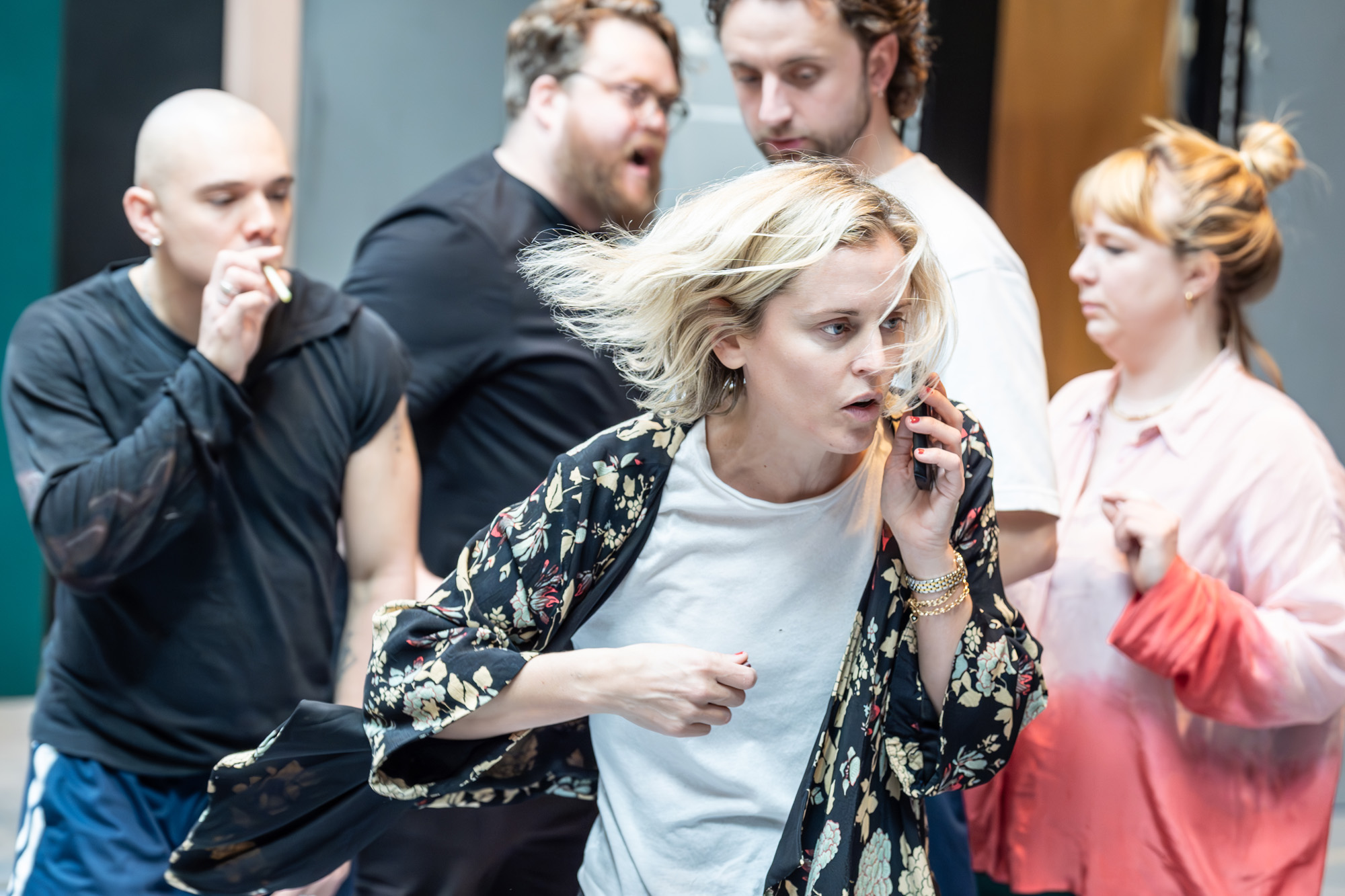Sam Hodges: 'The new Nuffield theatre is even better than I thought it might be'

© Luke Macgregor
Sam Hodges is the artistic director of Nuffield Southampton Theatres, which now comprises of NST Campus and NST City. The brand new NST City opened last month with Sam Hodges' world premiere production of The Shadow Factory. The space is a £28 million theatre with a 450-seat main house and a 135-seat studio theatre. Here Hodges explains a little about the new space and what it's been like working on it for the last four years.
You opened a new show at the same time as the theatre was opening, how did you find that?
Our design for The Shadow Factory poured nine tons of concrete onto a thrust stage, which is possibly a rather perverse thing to do with a new space. But it has been extraordinary. Other than opening with a very important local story, I wanted to show the building off.
Does it feel as though the locals got behind it?
The building is open seven days a week now and it feels terrific. The city was excited and embraced it, the headline in the local paper was "Theatre of Dreams" which was very nice. Over the first weekend we had 4,000 people in the square on the Friday night and thousands of people exploring the building. It’s been a big relief.
Were there some hair-raising moments?
We were supposed to be given the building months and months ago so we would have had lots of time to get used to the flow of people round the building, but instead we got it in December. So our first experience of the building was a sell-out preview.
Can you explain the main space in the new theatre?
You can pretty much do anything you want with it. It was designed as an end on theatre, with the stalls raked at the back which can disappear into the wall at the press of a button. But when I got involved I was keen on ensuring the distinction between the Campus venue and this one. Now we have something a bit like the Young Vic with a modular seating configuration so we can put the seats exactly how we want them. There’s currently five official layouts, but The Shadow Factory wasn’t even one of those.
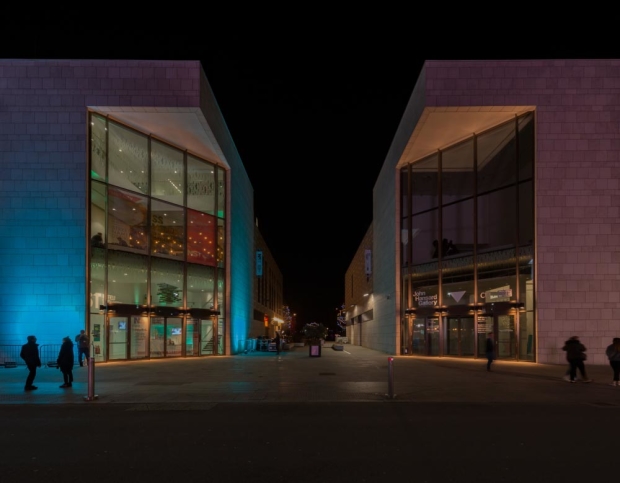
© Stefan Venter
And the theatre offices are based now at NST City?
Yes, NST Campus will now be our receiving house for touring work and for our Christmas work. A bit like the Everyman and Playhouse in Liverpool. The NST City feels like a much more public space, we have a big restaurant and bar, a rehearsal space, dance studio, community spaces which are full of people all day.
How long has this new building been on the cards?
It has a slightly convoluted history, but the headlines are that Nuffield won the tender to run it in 2007, which was overturned in 2008 by the Arts Council. But when I began as artistic director four years ago, ACE had redrawn their regional boundaries, so we moved from the south east to the south west, despite obviously not having actually moved. So I took the opportunity to sit down and talk to ACE south west and put the case that the city just didn’t have the infrastructure to deal with competing entities.
How does it feel now it’s open?
It’s actually much better than I thought it would be. I wasn’t involved in the original design and then I brought in the flexibility that I mentioned earlier, so I thought there might be a world where it would feel like a fudge. But it doesn’t, it feels absolutely integral to the design. It’s a perverse thing to say at this point, but I think the city could do with a 900-seat theatre, although in terms of how it’s catalysing cultural regeneration, it feels much more promising than I had imagined.
What are you hoping for the future of the space?
There are three areas. In terms of the work we produce, the last few years has been about marrying artistic ambition with technical and operational capacity and we’ve taken work out to major houses and into London. So we’re going to do more of that. In terms of development, I want Nuffield to be a major residency hub, but we are going to be very specific about who we support. So we will work with playwrights, directors and designers and I think it’s really important that the work we’re making with them has the potential to escalate to the main house. Then there’s community, which is growing and growing. We had a community chorus in our first show and we’re about to launch a community panel.
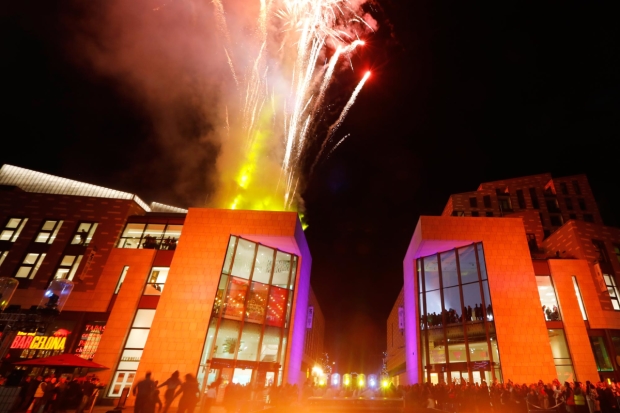
© Luke Macgregor
How would you describe Southampton?
It isn’t terribly confident about itself and what its identity is. There are lots of individual elements, which are fantastic, but there’s not the consolidation and communication about pulling those together to sit up and be counted. The city has had a huge amount of deprivation, it’s an industrial city, a working-class city, its heritage is ship building, plane building and it has two universities. I think it’s a city that’s on a trajectory to knowing itself like Bristol or Manchester.
What have you learnt from the process of working on NST City?
Lots. But I think it took me a little while to work out that being front-footed and clear and open, even if that might risk some negative press, is always the better option. Sometimes monitoring what you say for fear of saying the wrong thing is more damaging than just being straight up. The community want, more than anything, communication.
Is it a slightly worrying time to be relying on council funding?
It is, of course. The council has been the partner for 15 years, and although it’s a politically volatile government – it flip flops between parties – the one cross-party pledge they’ve had is this building. So there’s an admirable understanding of what difference a building like this can make. There’s also a commitment to funding us for a period of time, but you’d be foolish not to have an eye on the future. So one of our big business goals is to vastly reduce our reliance on public funding over the next few years.
And Craig David is going to be a patron!
Craig is from Southampton, he is a legend. We’re expanding our programme into music, spoken word, dance, circus and we’re looking for figureheads who champion that in their own way. So we’ve also appointed Inua Ellams and Drew McOnie. It’s about creating a local stir.
Will he be writing a musical?
I mean, we can only dream. It would be my life’s work.
The next show in the NST season is A Streetcar Named Desire which will run from 23 March to 6 June.




